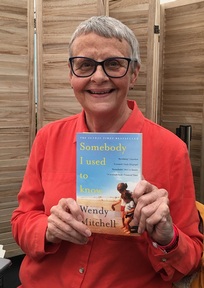Christie + Co: Care homes are key targets for growing pool of UK and US financial investors
An increasing number of financial investors from both Britain and America are targeting the care home market, attracted mainly by high-end care homes privately funded by residents rather than local authorities.

In its review of the care home market performance plus predictions for 2015, Christie + Co’s Business Outlook 2015, revealed there has been a 9.8 per cent increase in values of care home businesses and predicted a buoyant year ahead.
“Overall there is optimism in terms of the care home market and we will see more activity in the market place in terms of sales,” says Richard Lunn, head of care for the specialist property adviser.
Over half a million people are currently being cared for in care homes across the UK, and with Britain’s over-65s now outnumbering people under the age of 16, for the first time in history, this only looks set to increase.
This growing demand for care where demand is outstripping supply, is attracting foreign investors, and this was evident last year, when “investors, primarily from North America, actively targeted the care sector in 2014 and were responsible for driving a number of major transactions at aggressive pricing,” reveals Mr Lunn.
These buyers included US and UK based Special Situation Funds, Hedge Funds, Private Equity Funds, and REITS alongside more traditional trade buyers.
“Coming from an environment that has been dominated by distress for so long, we’ve segued into a much more confident market. The recovery has gained considerable momentum over the year – arguably as a result of investor sentiment and yield profiles, rather than any significant change in trading fundamentals across the industry as a whole.”
Growth in new build care homes will continue
He predicts that we will continue to see a growth in new build care homes due to the current cost of land. However care home developers are facing stiff competition from residential house builders due to development funding and financing being more widely available .
The growth in purpose built care homes is largely concentrated in the South East although the rest of the UK is also seeing a growth in new build care homes.
“If you look at the market going back 20 years, there was a greater proportion of care homes being built in the north of the country as land and labour costs were cheaper but this is now changing,” according to Mr Lunn.
Dilnot cap
The Dilnot social care cap, which will see the amount people have to pay for their care capped at £72,000, is due to come into force in April 2016.
Residents will still have to pay for their accommodation and food but their nursing care will be capped. It is estimated that only one in eight people will benefit from the cap as average life expectancy in a care home is two years, so most people will not have spent up to the cap of £72,000.
The jury is out as to how the Dilnot cap will affect care home providers as there has been no detail on it as yet. However at the moment “care providers see it as another bureaucratic thing they are going to have to deal with”, according to Mr Lunn.
Funding
On the operational side, care homes that are mainly funded by the local authorities will continue to struggle financially. “The cost of providing care is increasing due to the National Minimum Wage as a lot of a care home provider’s costs go on wages for care home workers and there are more regulatory requirements from the CQC, which have led to extra costs in terms of compliance.”
The gap between the high-end care homes with privately-funded residents and the care homes funded by local authorities will continue to grow, according to Mr Lunn, who says this year we will see “super prime stock outperforming and low quality assets requiring significant capital just to maintain occupancy”.

“I think we will see local authorities continuing to fund care home places but we will see more families topping up leading to more co-payments.”
HC One will be a name that will be prominent in the transaction market this year. At the end of last year, Court Cavendish, which had been managing HC-One care homes, joined up with two investment companies, in a deal which Christie + Co advised on, to acquire its parent company NHP for £477m.
HC-One was formed in 2011, when it took over a third of Southern Cross’s homes after the company collapsed under £50m of debt.
The new partnership was created with a view to consolidating HC-One’s rise and the new organisation is planning to acquire further homes and diversify the care provided to include retirement villages, residential, nursing and home care.
Mr Lunn says: “We can expect HC-One to feature highly in the 2015 transaction table, as it progresses from turnaround to transformation and takes advantage of its new, financial firepower.”
He also predicts that we will continue to see corporate activity in the specialist sectors such as mental health and learning disability. “Voyage and TRACS were both sold last year and other providers in this sector are wanting to grow their business.”
General Election
Politics could have an impact on the sector this year due to the General Election, according to David Smith, economics editor of The Sunday Times, who launched the Christie + Co report.
“The big domestic risk is politics with the outcome of the May General Election more uncertain than for decades, with the fragmentation of British politics,” he says.
Mr Smith predicts another Conservative-Liberal Democrat coalition but said several other results are perfectly possible.
In terms of the election affecting the economy, the British economy has picked up and while it may slow down a little this year, it should sustain a good rate of growth, driven by business investment, including property investment and consumer spending.
There are risks and uncertainties both globally and in Britain, but there are also opportunities, according to Mr Smith, and this coupled with the high demand for social care, can only be good news for the care home market.
To read Christie + Co’s Business Outlook 2015, go to http://www.christiebusinessoutlook.com/
Latest Features News
 25-Nov-19
2019 Election: Boris Johnson leaves social care in 'too difficult box' but Labour vows to end 'crisis'
25-Nov-19
2019 Election: Boris Johnson leaves social care in 'too difficult box' but Labour vows to end 'crisis'
 18-Oct-19
Podcast: Wendy Mitchell and dementia: 'My biggest fear is not knowing who my daughters are'
18-Oct-19
Podcast: Wendy Mitchell and dementia: 'My biggest fear is not knowing who my daughters are'
 27-Sep-19
Exclusive: Care minister backs care workers' call for time off to grieve and attend funerals
27-Sep-19
Exclusive: Care minister backs care workers' call for time off to grieve and attend funerals
 19-Sep-19
Podcast: Gyles Brandreth says poetry helps ward off dementia
19-Sep-19
Podcast: Gyles Brandreth says poetry helps ward off dementia
 30-Aug-19
Edinburgh Fringe funnyman joins comics facing toughest audience at care home gig
30-Aug-19
Edinburgh Fringe funnyman joins comics facing toughest audience at care home gig